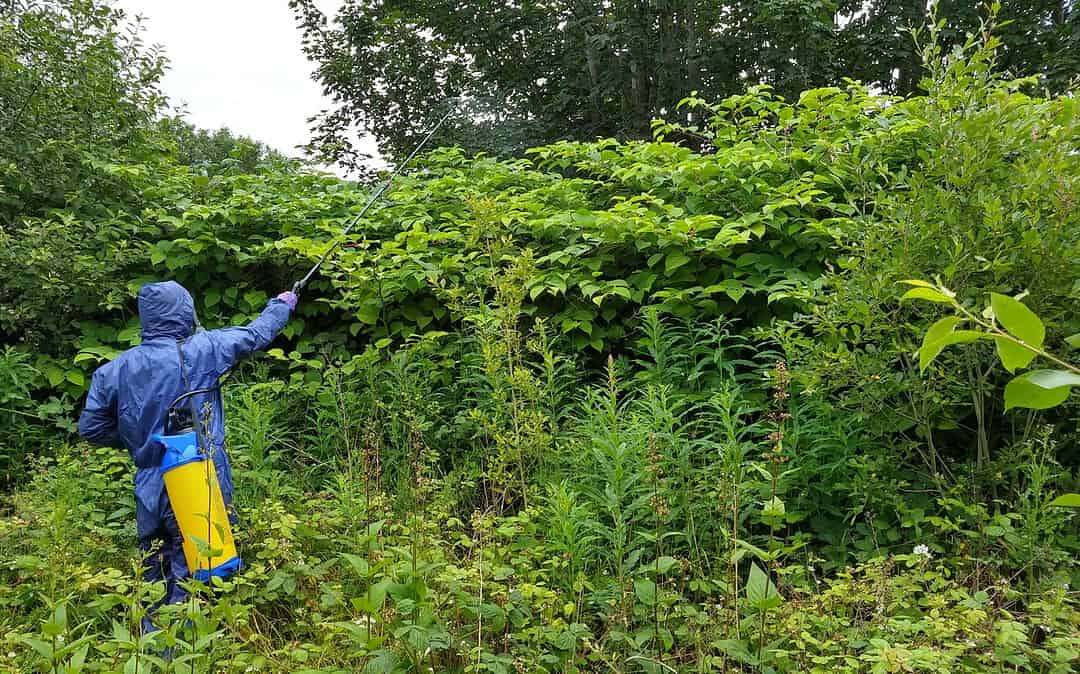Learn why you should not cut Japanese knotweed. Cutting is not an effective method for controlling or removing invasive plants.
Also, discover alternative methods to control it effectively in your garden or landscape.
Japanese knotweed (Fallopia japonica) is a highly invasive plant species native to some parts of Asia. It was first introduced to Europe and North America as an ornamental plant at the beginning of the 19th century. It quickly spread and became a significant problem in many parts of the world. Learn Why you should not cut Japanese knotweed. It is now considered one of the most invasive plants in the world, and it is classified as a noxious weed in many countries.
It is a very fast-growing perennial plant.
It can reach up to 3 meters in height. It has large, heart-shaped leaves and produces clusters of small, Creamy flowers in the summer. It is most commonly found along rivers, streams, and wetlands, but it can also grow in many other types of habitats. It is particularly problematic in urban and suburban areas, where it can damage buildings, roads, and other infrastructure.
The plant reproduces both vegetatively and sexually. It produces underground rhizomes (stems) extending up to 3 meters in depth and 7 meters in width. These rhizomes can produce new shoots and plants after the above-ground parts of the plant have been removed, making it difficult to eliminate the plant once it has become established.
One of the most common mistakes people make when trying to control Japanese knotweed is cutting the plant.
Cutting the plant may make it look like it has been removed, but it will not actually kill the plant. When the plant is cut, the stem and leaves will die back, but the rhizomes will remain alive and send up new shoots. This can lead to the infestation becoming more widespread. Additionally, once cut, the plant releases sap that may cause skin irritation.
The most effective way to control Japanese knotweed is to dig up the roots.
This is a labour-intensive and time-consuming process, but it is the only way to ensure that the plant is completely removed. It is essential to dig up the entire root system, including all the rhizomes, and to dispose of them properly. If the rhizomes are left in the ground, they can still regrow and produce new plants.
Another effective method of controlling Japanese knotweed is to use herbicides. These chemicals can target the leaves and roots of the plant. However, it is important to use the correct herbicide and apply it at the right time for it to be effective. It is also important to follow all safety precautions and to use the herbicide according to the label instructions.
A way to control Japanese knotweed is to cover the plant with mulch or plastic, suffocating it and preventing it from receiving sunlight and water. This method can be effective, but it is important to ensure that the mulch or plastic is secured in place and does not blow away or become dislodged.
It can take a long time to kill Japanese knotweed.
It is important to note that killing Japanese knotweed is a long-term process, and it may take several years to completely eliminate the plant. It is also important to be vigilant and monitor the area for any new shoots or plants.
In conclusion, Why should you not cut Japanese knotweed? Because it is not an effective method of controlling or removing the plant. It can encourage the plant to spread. The most effective way to control Japanese knotweed is to dig up the roots, use herbicides, or cover the plant with mulch or plastic. These methods aim to target the roots, the most effective way to control the plant. It is always best to consult an expert to determine the best action for preventing or removing Japanese knotweed.
